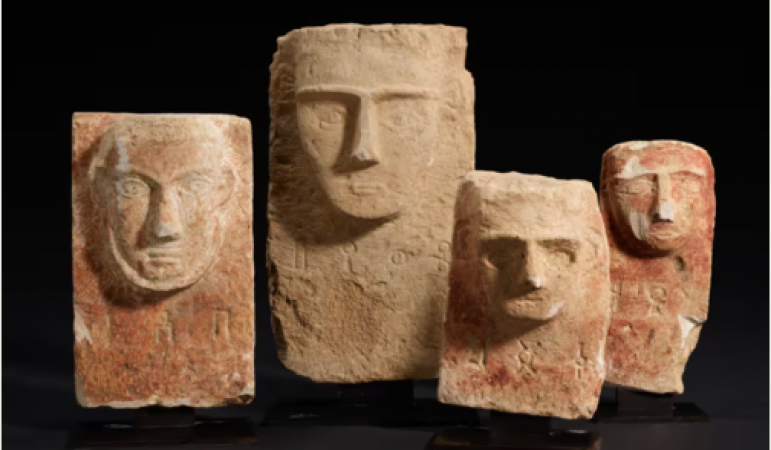
London: In a significant and historic agreement, officials from the renowned Victoria and Albert Museum in Britain have joined hands with Yemen to safeguard and care for four ancient stone artifacts that were recovered by the Metropolitan Police's art and antiques unit in an interior design shop in east London.
These stelae, dating back to the second half of the first millennium B.C., are believed to have been stolen from necropoli that have fallen victim to looting in recent years.
The fascinating journey of these ancient stelae began when an archeology enthusiast noticed them in an interior design store. Subsequently, the Metropolitan Police's art and antiques unit, which specializes in investigating art theft, illegal trafficking, and fraud, took possession of the stones.
Recognizing their historical and cultural significance, the authorities initiated steps to ensure their proper preservation and eventual return to their rightful place.
Under the terms of the groundbreaking agreement, the Victoria and Albert Museum in London will undertake the temporary care, research, and conservation of these priceless stelae.
The collaboration aims to ensure the artifacts are meticulously preserved until the situation in Yemen stabilizes, enabling their safe repatriation to their home country. This arrangement underscores the international commitment to protecting and preserving cultural heritage, even in the face of adversity.
While these ancient treasures are in the custody of the Victoria and Albert Museum, they will not be hidden away from public view. The stones are scheduled to be exhibited to the public at the museum's East Storehouse, slated to open its doors in 2025.
This provides an opportunity for the global community to appreciate and learn from the exceptional examples of Yemeni culture and creativity.
Also Read: Poland Procures Nearly 500 HIMARS Launchers in Landmark Defense Deal
The momentous agreement was officially signed by Tristram Hunt, the director of the Victoria and Albert Museum, and Yassin Saeed Noman Ahmed, the Yemeni ambassador to the United Kingdom.
This collaboration stands as a testament to the power of cultural diplomacy and international cooperation in the preservation of our shared heritage.
Tristram Hunt, the director of the museum, expressed his enthusiasm, stating, "This is a historic agreement that will give the public the chance to appreciate these exceptional examples of Yemeni culture and creativity before the objects are repatriated."
He also emphasized how this initiative aligns with the museum's "Culture in Crisis" program, which seeks to combat the illegal trade of looted objects and promote the preservation of cultural heritage worldwide.
Charles Harper, the UK's deputy ambassador to Yemen, recognized the profound impact of arts and culture in post-conflict societies. He remarked, "Arts and culture can play an important role in rebuilding a society from conflict, and this agreement is a fantastic way to ensure Yemeni culture remains in Yemeni care."
The devastating effects of conflict in Yemen have underscored the need for international support to preserve the nation's rich cultural heritage.
The ancient stelae that have been recovered are of such cultural and historical significance that they feature on the International Council of Museums' emergency red list of cultural objects at risk.
This list serves as a vital tool for identifying and safeguarding cultural artifacts that are vulnerable to illegal trade and destruction.
the collaborative effort between the Victoria and Albert Museum and Yemen to protect and preserve these ancient stelae stands as a shining example of international cooperation in the face of cultural adversity.
Also Read: Exploring Europe's Enigmatic Megalithic Structures
The agreement not only safeguards priceless artifacts but also symbolizes a commitment to upholding the values of cultural heritage and diplomacy.
As these stelae are set to be displayed in London before their eventual return to Yemen, they serve as a poignant reminder of the enduring importance of preserving our shared human history.